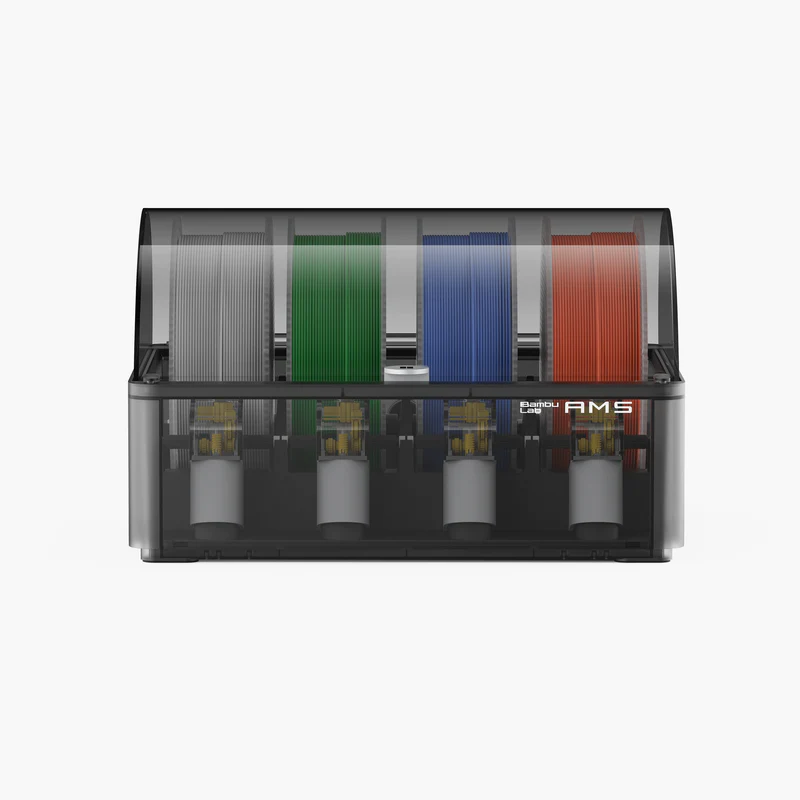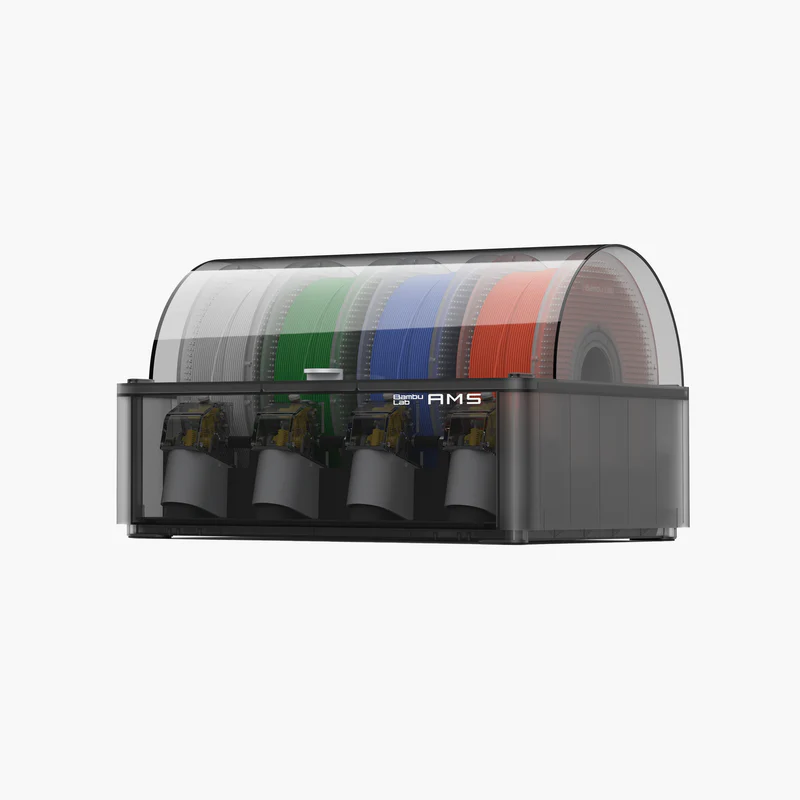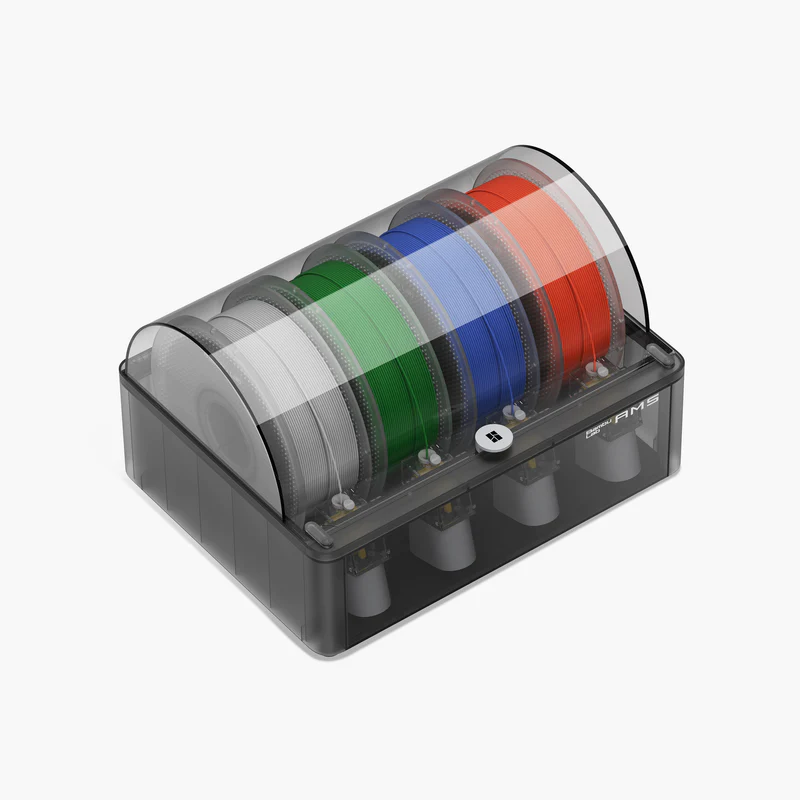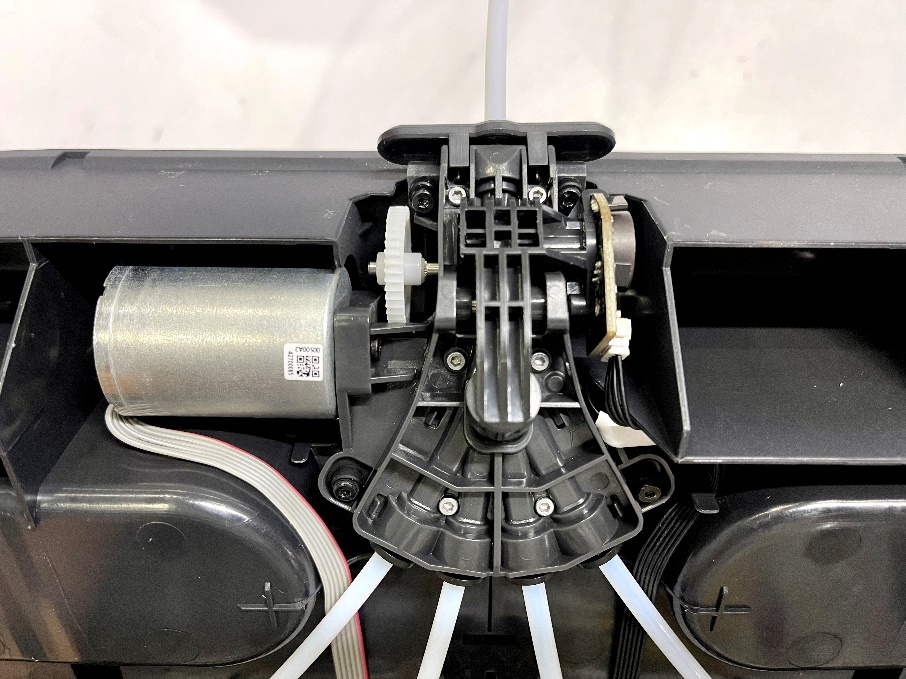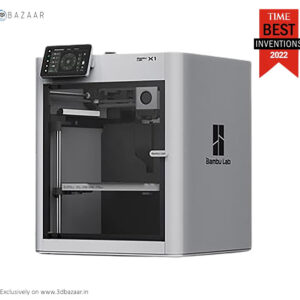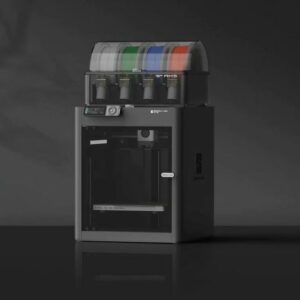Description
Product Description
- Bambu Lab AMS is an intelligent system that communicates with the toolhead to guarantee smooth feeding and automatic mid-print filament switching. It can detect the tension on filament and actively adjust the feeding pace. With RFID technology, Bambu Lab AMS identifies filament loaded inside and automatically configures the most appropriate print settings.
- Bambu Lab AMS equipped with humidity sensors and with an airtight enclosure, it keeps the filament dry and ready to use, which is especially helpful for engineering grade materials such as nylon and polycarbonate, which are hydroscopic.
- Each Bambu Lab AMS is composed of 4 filament slots, and up to 4 AMS can be installed in parallel. With multiple filament slots at disposal, it’s now possible to use snap-away support material or dissolvable filament to minimize the pain of removing supports
- Each AMS unit comes with 4 Reusable Spools (1 high temperature spool and 3 low temperature spools).
How does AMS work?
The AMS consists of three major parts: a set of four Filament Slots, a Filaments Hub, and a Filament Buffer. Each Filament Slot has its own motor to actively push filament forward or wind it back to the spool. The Filament Hub merges four filament paths into one and gives the filament a second stage driving force with a brushless motor. The Filament Buffer is located at the back of the printer, which connects the AMS to the toolhead extruder, in order to ensure the tension on the filament is within a given range so that the toolhead extruder can work easily and precisely.
Overall, there are 10 sensors in the filament path, so the position, speed, and tension of the filament is carefully monitored and controlled.
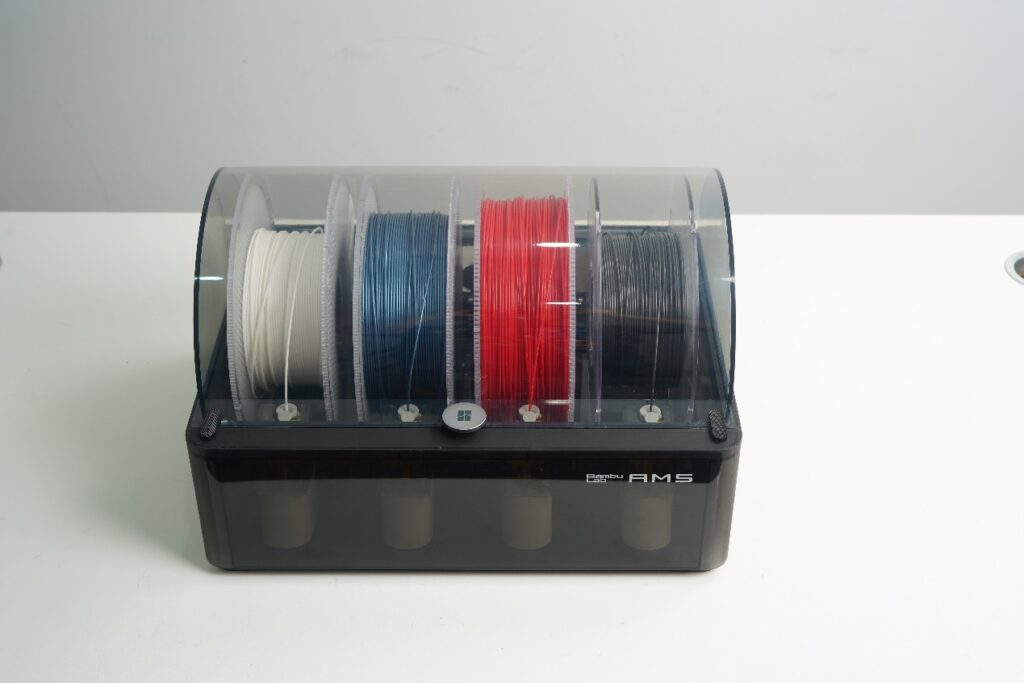
Filament Slot
The AMS has 4 filament slots, each filament slot has its own motor and gears to actively push the filament forward or wind it back to the spool. Each filament slot also has a sensor to detect the filament, when a filament is inserted, it will pull the filament automatically. During this process, it pulls the filament just like an extruder. When it needs to wind the filament back, it also rotates the spool for filament winding.
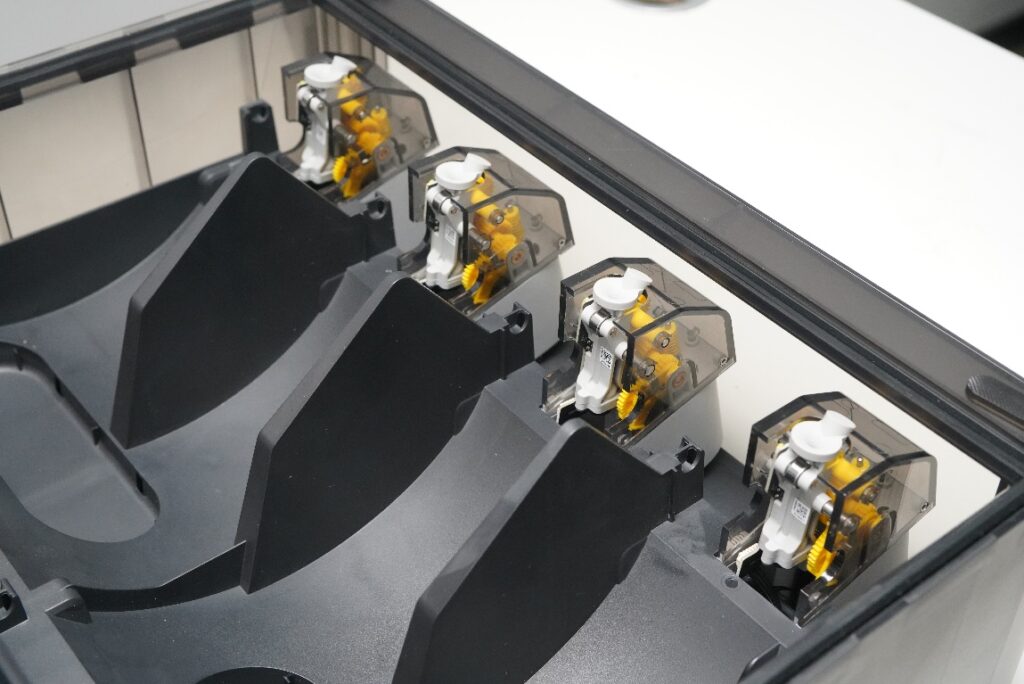
Filaments Hub
The Filaments Hub is located at the bottom of AMS, it consists of four hall sensors, one magnetic rotary encoder, and one brushless motor. It merges four filament paths into one. The hall sensor detects when the filament has reached a specific location, which in turn activates the brushless motor to give the filament a second stage driving force
Filament Buffer
The Filament Buffer is located at the back of the printer, connected to both the AMS and the toolhead extruder. It has a slide, a spring, and a hall sensor. When the AMS pushes the filament into the toolhead extruder, the slide will move forward due to the pressure of the filament. The hall sensor can then detect the displacement and location of the slide, and feedback that signal back to the AMS and the printer. By controlling the feed speed of the AMS, we can make sure the tension on the filament is within a given range so that the toolhead extruder can work easily and precisely, without adding too much or too little tension.
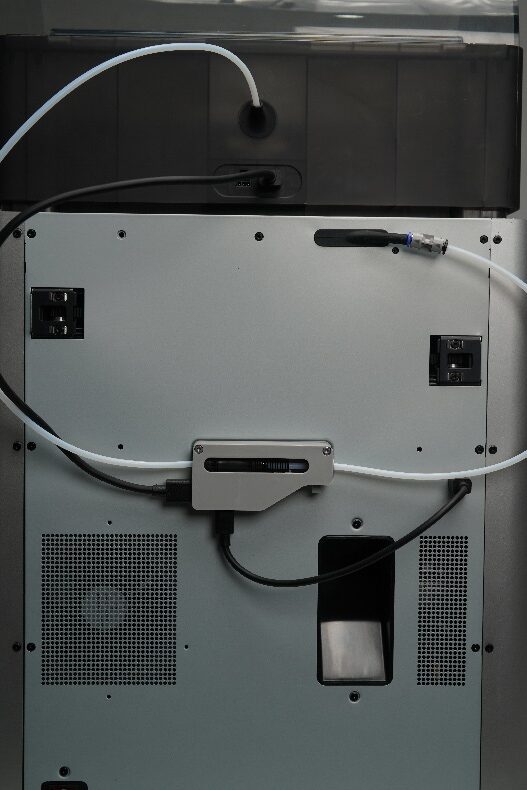
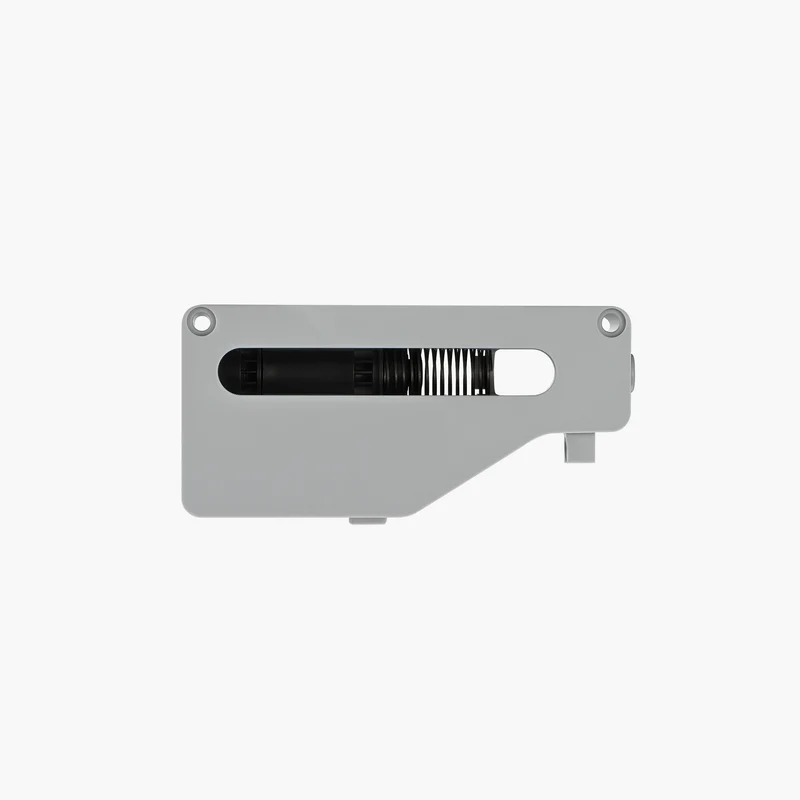
Note
- The AMS supports spools with a width of 50-68mm and the diameter of around 200mm. When operating the AMS, we recommend using Bambu Filament, which has been thoroughly tested to work with the AMS. If you purchase a single AMS unit, it will come with a filament buffer. If you plan to link multiple AMS units together, you will need to purchase the AMS Hub.
- Avoid flexible materials with the AMS because they can get stuck. These include TPE, TPU, or damp PVA. Glow-in-the-dark, particle-infused, or filaments with carbon or glass fibers may be brittle and break inside the AMS, or be abrasive and prematurely wear the internal parts. BambuLabs PA-CF and PAHT-CF, however, have both been designed and tested to be AMS compatible.
- Please try to avoid using cardboard spools with the AMS. The rollers inside the AMS control the rotation of the spools and they do so through the friction created between the plastic spool edge and the rubber rollers. Cardboard spools provide minimal friction, can tear or have warped edges, and will therefore slip or jam, causing failures or damage to the AMS.
In the Box
1x PC/ABS Alloy Material High Temperature Reusable Spool, 3x ABS Material Reusable Spool, 1x Filament Buffer, 1x Bus Cable – 4pin, 1x Bus Cable – 6pin, 2x Spare Filament Cutter, 3x M3*23 Screw, 1x 550mm PTFE Tube, 1x 370mm PTFE Tube, 4x Internal Tube, 1x PTFE Tube Connector, 1x Instruction Manual

